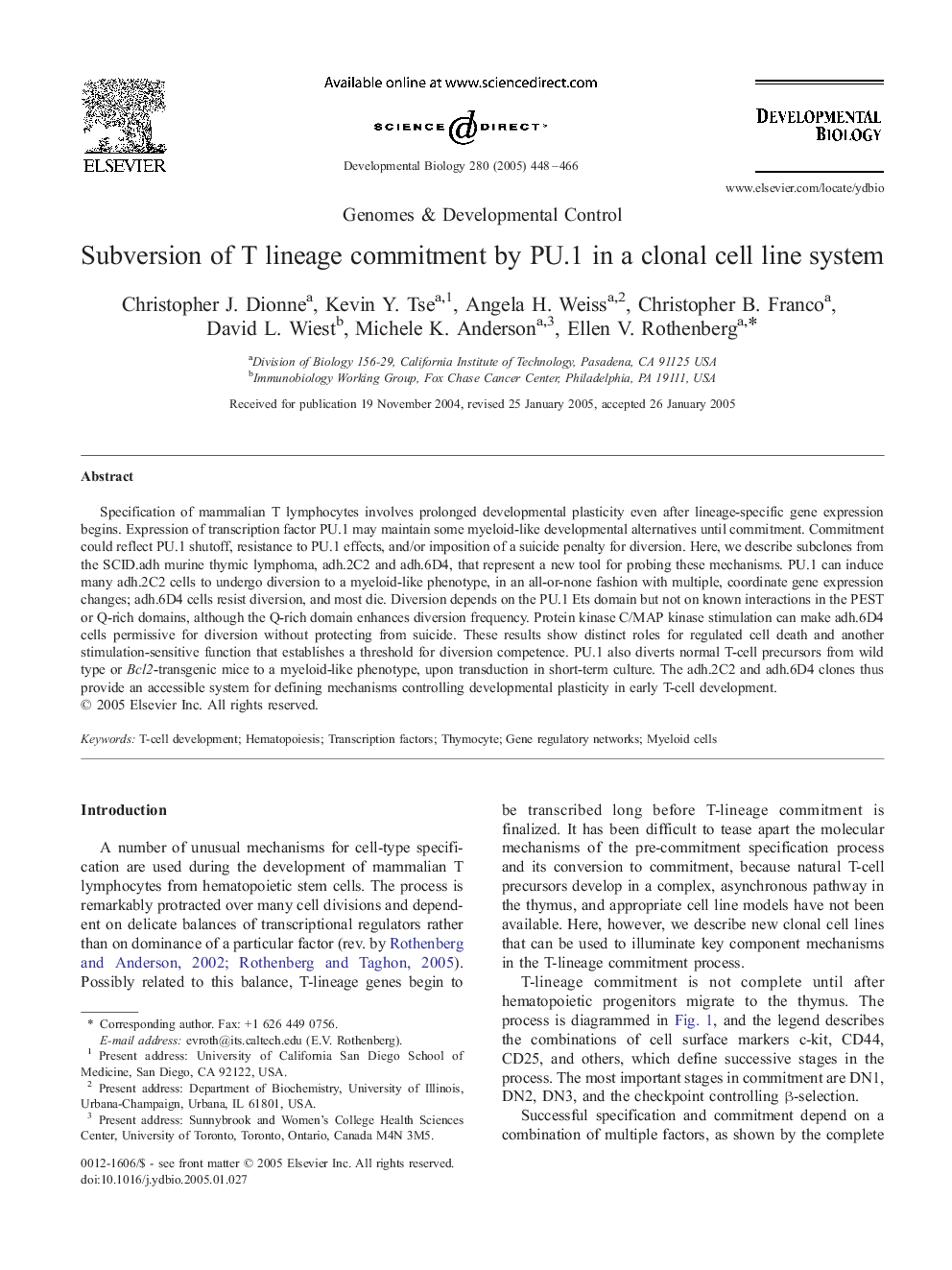| Article ID | Journal | Published Year | Pages | File Type |
|---|---|---|---|---|
| 9912290 | Developmental Biology | 2005 | 19 Pages |
Abstract
Specification of mammalian T lymphocytes involves prolonged developmental plasticity even after lineage-specific gene expression begins. Expression of transcription factor PU.1 may maintain some myeloid-like developmental alternatives until commitment. Commitment could reflect PU.1 shutoff, resistance to PU.1 effects, and/or imposition of a suicide penalty for diversion. Here, we describe subclones from the SCID.adh murine thymic lymphoma, adh.2C2 and adh.6D4, that represent a new tool for probing these mechanisms. PU.1 can induce many adh.2C2 cells to undergo diversion to a myeloid-like phenotype, in an all-or-none fashion with multiple, coordinate gene expression changes; adh.6D4 cells resist diversion, and most die. Diversion depends on the PU.1 Ets domain but not on known interactions in the PEST or Q-rich domains, although the Q-rich domain enhances diversion frequency. Protein kinase C/MAP kinase stimulation can make adh.6D4 cells permissive for diversion without protecting from suicide. These results show distinct roles for regulated cell death and another stimulation-sensitive function that establishes a threshold for diversion competence. PU.1 also diverts normal T-cell precursors from wild type or Bcl2-transgenic mice to a myeloid-like phenotype, upon transduction in short-term culture. The adh.2C2 and adh.6D4 clones thus provide an accessible system for defining mechanisms controlling developmental plasticity in early T-cell development.
Keywords
Related Topics
Life Sciences
Biochemistry, Genetics and Molecular Biology
Cell Biology
Authors
Christopher J. Dionne, Kevin Y. Tse, Angela H. Weiss, Christopher B. Franco, David L. Wiest, Michele K. Anderson, Ellen V. Rothenberg,
